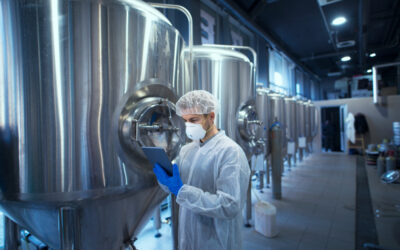As the world’s population grows and climate change exacerbates water scarcity, the demand for freshwater resources is reaching unprecedented levels. In this context, water treatment and desalination technologies have emerged as vital solutions to address the global water crisis. Chemical engineers are pivotal in designing, optimizing, and implementing these processes, ensuring they are efficient, cost-effective, and environmentally friendly.
The Growing Need for Water Treatment and Desalination
Freshwater is a finite resource under increasing strain due to population growth, industrialization, and climate change. According to the United Nations, over two billion people live in countries experiencing high water stress, and about four billion people face severe water scarcity during at least one month of the year.
Water treatment and desalination technologies offer promising solutions to this crisis. Water treatment removes contaminants from water to make it safe for human consumption and use. At the same time, desalination technologies convert seawater into freshwater, providing a potential solution to water scarcity in coastal and arid regions.
Solving Complex Problems
Chemical engineers are at the forefront of developing and optimizing these technologies. They apply chemistry, physics, and mathematics principles to design processes that effectively remove contaminants from water or separate salt from seawater.
In water treatment, chemical engineers design processes that involve physical separation techniques (like filtration and sedimentation), chemical treatment (like disinfection and coagulation), and biological processes (like activated sludge treatment). They work on optimizing these processes to maximize contaminant removal, minimize energy consumption, and reduce the production of treatment residuals.
In desalination, chemical engineers design and optimize processes like reverse osmosis, electrodialysis, and thermal desalination. They work on improving the efficiency of these processes, reducing their energy consumption, and managing the disposal or reuse of the resulting brine.
Challenges and Opportunities
Despite the promise of water treatment and desalination technologies, several challenges must be addressed. These include the high energy consumption of desalination processes, the disposal of treatment residuals and brine, and the potential environmental impacts of these technologies.
Chemical engineers are actively working on solutions to these challenges. For example, they are developing energy-efficient desalination technologies, such as forward osmosis and pressure-retarded osmosis, which have the potential to reduce the energy consumption of desalination significantly.
Chemical engineers are also exploring ways to manage the disposal of treatment residuals and brine. This includes developing zero-liquid discharge systems, which aim to recover and reuse all the water and salts in the brine, and exploring beneficial uses for treatment residuals, such as their use in construction materials or as soil amendments.
Furthermore, chemical engineers are studying the potential environmental impacts of water treatment and desalination technologies and developing strategies to mitigate these impacts. This includes the assessment of the lifecycle environmental impacts of these technologies and integrating renewable energy sources to power these processes.
Promising Solutions
As the global water crisis intensifies, the role of chemical engineers in developing and optimizing water treatment and desalination technologies has never been more important. Despite the challenges, these technologies offer promising solutions to address water scarcity and ensure the availability of clean water for all. Through their work, chemical engineers are addressing one of the most pressing challenges of our time and contributing to the United Nations’ Sustainable Development Goal of ensuring access to water and sanitation for all.
Case Study: Membrane Filtration for Water Treatment
Chemical engineers have made significant contributions to the water treatment field, helping to ensure the availability of clean, safe water for communities worldwide. One notable example is their role in developing and optimizing membrane filtration technologies.
Membrane filtration is a water treatment process that uses a semi-permeable membrane to separate contaminants from water. It’s particularly effective for removing small particles and microorganisms, and it’s used in various applications, from the treatment of drinking water to the purification of industrial wastewater.
Chemical engineers have been instrumental in developing and optimizing membrane filtration technologies. They’ve designed and synthesized new types of membranes with improved performance characteristics, such as increased flux, enhanced fouling resistance, and better selectivity for specific contaminants.
For example, chemical engineers have developed nanocomposite membranes that incorporate nanoparticles to enhance their performance. These nanoparticles can provide antimicrobial properties, improve the membrane’s mechanical strength, or increase its selectivity for specific contaminants.
Chemical engineers have also been involved in designing and optimizing membrane filtration systems. They’ve used their knowledge of fluid dynamics and mass transfer to design systems that maximize the efficiency of the filtration process, reduce energy consumption, and minimize fouling.
Furthermore, chemical engineers have developed strategies for cleaning and maintaining membranes, helping to extend their lifespan and reduce the cost of membrane filtration processes.
Through their work, chemical engineers have helped to make membrane filtration a reliable, effective, and cost-efficient technology for water treatment. This has provided clean, safe water for communities worldwide, improved public health, and supported sustainable development.




